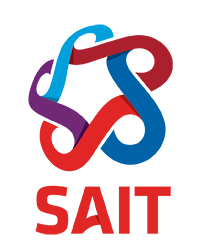Wordpress Install (the classic way) and Feature Tour
Homework
- Introduction to Wordpress
- Reference:
- WordPress Codex (Developer Documentation)
- Basic Usage
- Administration Screens
- Reference:
- Local Development Environments
- The 4 Best Local WordPress Development Environments in 2020: XAMPP vs MAMP vs Local vs DesktopServer on Delicious Brains
- The Best Setup for Your Local WordPress Development Environment on Delicious Brains
- Wordpress SQL Queries
Morning reflection
Housekeeping
- This afternoon: Review session and A3/A4 answer keys
1. Install WP
Learning Objectives
- Install a vanilla version of WP on your system.
- Locate the
wp-config.phpfile in a WP installation.
Materials
Key Takeaways
-
File permissions for Mac. In order to install themes and upload Media, WP needs write access to your
wp-contentdirectory:-
Navigate to your WP root directory (Tony’s location):
$ cd /Users/tony/.bitnami/stackman/machines/xampp/volumes/root/htdocs/blog -
Make your
wp-contentfolder writable:$ chmod -R 777 wp-contentWarning: DON’T do this on a hosted website.
-
- This method of installation is a last resort but is sometimes needed. We’ll use more modern methods next week but keep this installation as a code reference.
- Pro-tip: On the “Information needed” page that asks for an account username, DON’T use
adminon production websites (it’s fine for today). That’s honey for hack bots.
2. WP Tour
Learning Objectives
- Summarize the major features of the Wordpress Admin panel.
- Locate the
wp-contentdirectory in a WP installation. - Understand the purpose of
wp-contentand the directories inside it. - Locate the database fields referenced in 13 Useful WordPress SQL Queries You Wish You Knew Earlier.
Materials
- WordPress Codex (Developer Documentation)
- Basic Usage
- Administration Screens
Key Takeaways
-
The
wp-contentis the only directory you usually need to deal with for most projects. It’s safe to ignorewp-adminandwp-includes.project-root ├─ wp-admin ├─ wp-content ├─ plugins ├─ themes ├─ theme-1 ├─ theme-2 └─ theme-3 └─ uploads └─ wp-includespluginscontains all the (you guessed it) plugins you install from the Admin panel. Elementor (covered next week) is a theme-builder that will be installed as a plugin.themesis the closest thing WP has to aviewsfolder. This is where any installed themes are located.uploadscontains all the Media files you upload in the Admin panel.
- Plugins
- The number one source of blog bloat:
- Beware of client projects that have more than 20 plugins;
- Beware of plugins that are more than a major version out of date;
- Beware of plugins that are no longer maintained.
- The number one source of blog bloat:
- Posts - great for content that:
- has an author(s);
- has a category;
- See Codex: Post Categories
- can be tagged;
- See Codex: Post Tags
- has a date:
- is organized by date;
- needs to be scheduled.
- each post type can be assigned a page template
- See Codex: Post Templates
- don’t support custom templates
- can be customized by setting a Post Format (the theme must explicitly support this)
- Pages - great for content that:
- is important enough to be in the primary navigation;
- doesn’t change often;
- requires structured layouts
- See Codex:
- Page Templates
- Note: Template pages override custom pages
- See Codex:
Review and Assignment 3 & 4 Answer Keys
- Tony needs an example project from Assignment 3. Post your Heroku link and GH repo in the chat if you’d like Tony to make an example of you.
Dailies
- No Daily for today.
